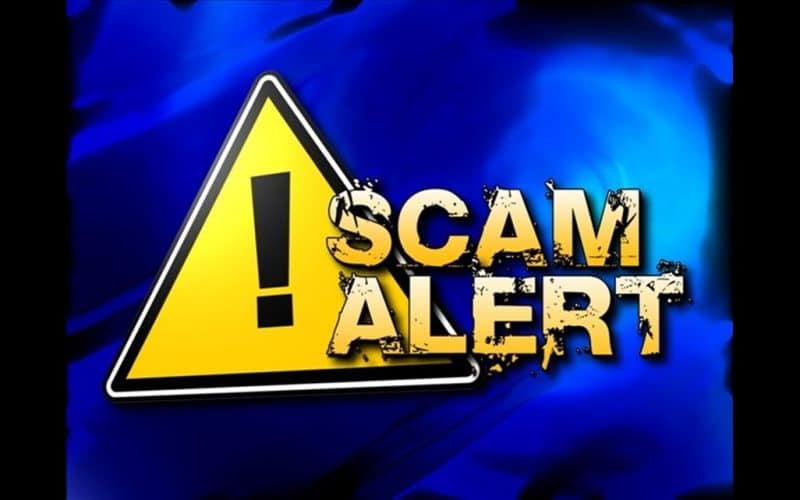When you are in desperate need of financial aid, the last thing you want is to fall prey to a loan scam. Unfortunately, loan scammers in South Africa are exploring new ways to take advantage of people’s desperate situations. These scams use social media ads, phony websites, and pushy techniques to target people from various professions, promising rapid income that never arrives. Understanding these scammers’ strategies and detecting red signs is critical to protecting yourself and your money.
In this article, I’ll walk you through a list of recognized loan scammers in South Africa, backed up by genuine facts and tales to help you stay vigilant. I’ll also share actionable templates and advice to help you identify trustworthy lenders and avoid falling into these perilous traps.
Why Are Loan Scams Increasing in South Africa?
Loan scams are on the rise due to a variety of causes, including a deteriorating economy and increasing unemployment rates. According to research by South Africa’s Financial Sector Conduct Authority (FSCA), financial frauds have surged by more than 50% in the last two years, owing primarily to internet fraud, in which scammers can construct bogus profiles and websites to entice people in. Many of these scams target people who are already financially fragile, which makes them much more dangerous.
Loan scammers target those who do not have typical access to credit, such as young professionals, small business owners, and even pensioners. Knowing who these scammers are, what strategies they employ, and how to check trustworthy lenders might help you avoid serious financial losses.
Understanding Loan Scammers: How Do They Operate?
Loan fraudsters normally make it appear that receiving money is a quick and straightforward process, but some red flags might help you spot a scam. Here are a few such tactics:
- Guaranteed Approval: Legitimate lenders typically have stringent requirements. If a lender guarantees approval regardless of your credit score, it’s probably a scam.
- No-Interest or Too-Good-To-Be-True Rates: Extremely low interest rates or unrealistic repayment periods can raise warning flags.
- Requesting Payment Up Front: Scammers may want an “application fee” or “insurance fee” before disbursing the loan. Real lenders subtract fees from the loan amount, not before.
- High-Pressure Tactic: Scammers frequently pressure you to make rapid decisions. Legitimate lenders will not require you to act instantly.
List of Known Loan Scammers in South Africa
Here’s a list of known loan scammers in South Africa, along with their strategies and how you may protect yourself.
#1. Easy Money SA
Tactic: Easy Money SA frequently uses social media ads to market “guaranteed loans” regardless of credit history, which requires an upfront “fast-track processing” fee.
- RED FLAGS: They claim quick approval but require application payments beforehand. Contact information and advertisements frequently disappear once money is made.
- Protection Tip: Legitimate lenders do not want payment upfront for processing. Before making any payments, verify all lenders with official sources, such as the FSCA.
#2. SureLoans Solutions
Tactic: SureLoan Solutions, posing as a trustworthy loan company, promises quick approvals before disappearing after collecting an “insurance fee.”
- Red Flags: Frequently changing contact information, no official website, and inconsistent communication.
- According to the South African Banking Association, complaints against SureLoan Solutions rose by 30% last year.
- Advice: A short search of consumer forums and the FSCA website can indicate whether a lender has outstanding complaints, indicating potential scams.
#3. QuickFinance Experts
Tactic: QuickFinance Experts provides high loan amounts at low interest rates, pressuring users to act quickly to get a “special offer.”
- Red Flags: Extremely low interest rates, urgent call to action, and limited contact information. They advocate for quick judgments.
- How to Spot a Scam: To validate enrollment, use our Lender Verification Template (available in the resources area), and check internet reviews to ensure credibility.
#4. African Gold Finance
Tactic: African Gold Finance targets people with bad credit by giving unsecured loans, but they charge “collateral insurance” fees upfront.
- Red Flags: No physical address, non-working phone numbers, and forceful demands for immediate action.
- Advice: Check the lender’s authenticity with the FSCA or SARB. Avoid lenders who encourage you to pay beforehand for collateral costs; this is a common red flag in loan fraud.
#5. Global Funds Direct
Tactic: This fraud business advertises on social media, offering to provide “no paperwork” loans that are granted instantaneously, mostly targeting those in desperate need.
- Red Flags: They want sensitive personal information upfront and do not have a proper application process, frequently with no contact information.
- Template Tip: Use our Loan Verification Template to determine the lender’s registration status, read reviews, and establish their actual address.
#6. Fast Cash Lenders
Tactic: FastCash Lenders contact customers by email and SMS, promising “instant cash loans” with no credit checks.
- RED FLAGS: They exclusively communicate via email, require upfront payments, and provide poor or nonexistent customer assistance.
- Advice: Use websites such as HelloPeter to review client comments. If a lender is not on the FSCA or SARB list, it is best to avoid them.
#7. Secure Funds SA
Tactic: Offers loans with no risk to everyone, including those with bad credit, but charges a “secure processing fee” before disbursing funds.
- Red Flags: Inadequate contact information, pushy communication, and hidden fees.
- Tip: Consider only registered lenders with verifyable addresses. If the lender demands unusual costs before releasing funds, you should walk away.
#8. Instant Loan Direct
Tactic: Offers a “no paperwork” alternative and pushes users to pay processing fees in order to receive the loan quickly.
- Red Flags: A poorly designed website, a lack of clear terminology, and the need to act swiftly.
- Tip: Check legitimacy using the FSCA database. Unclear terms and a poor online presence signal a scam; respectable lenders value transparency.
#9. LoanforAll
Tactic: Advertises approval in minutes for all applicants but needs a refundable deposit before issuing the loan.
- Red Flags: Inconsistent contact information, high-pressure sales methods, and claims of “guaranteed approval” regardless of the applicant’s credit history.
- EEAT Highlight: Select lenders who freely communicate their conditions, keep consistent contact information, and provide verifiable contact information.
#10. Universal Finance SA
Tactic: Employs high-pressure techniques to lock customers into high-interest loans with ambiguous conditions, charging minor “processing fees” that are never reimbursed.
- Red Flags include hidden interest rates, frequent changes in contact information, and requests for upfront payments.
- Advice: Before making a decision, check with consumer watchdogs or reputable financial experts.
These facts explain how each fraudster operates, as well as particular techniques to protect yourself against fraud. Always check lenders’ validity, never pay advance fees, and report any suspected scams to the FSCA to help protect the community from fraudulent actions.
How Do I Know If a Lender Is Legit?
Verifying a lender’s validity is critical before getting into any loan transaction. South Africa has two key institutions that regulate and list reputable financial providers: the Financial Sector Conduct Authority (FSCA) and the South African Reserve Bank (SARB).
- Check FSCA Registration: The FSCA maintains a searchable online directory of registered financial providers. Visit the FSCA website and search for the lender’s name. If the lender is not listed in the registry, this is a major red flag because all genuine financial services in South Africa must be registered with the FSCA.
- Cross-check with SARB: The FSCA regulates financial service providers, whereas the SARB monitors monetary policy and certain financial institutions. Make sure a significant loan provider you are working with has received approval from the SARB. This additional step assures that you are working with a genuine and licensed institution.
- Check Consumer Reviews: Online consumer reviews and forums are excellent resources for determining a lender’s reputation. In South Africa, platforms such as HelloPeter are popular for gathering genuine customer feedback on a variety of businesses, including lenders. Look for recurring complaints about hidden costs, aggressive communication, or fraudulent behavior.
- Verify Contact Information and Physical Presence: Legitimate lenders usually have clear contact information and a physical office address. Be wary of lenders who only supply a temporary or foreign-based phone number, or whose address is ambiguous or unverifiable. Genuine lenders should have a secure URL (https://), detailed information, and a customer service line that is always available.
Taking these procedures can significantly lower your chances of dealing with fake loan providers.
What Should I Do if I Suspect a Loan Scam?
If you suspect you’re dealing with a loan scam, take fast steps to protect yourself from future harm.
- Stop All Communication: Discontinue any future dealings with the suspected scammer. Scammers frequently employ persuasive strategies to persuade victims; thus, discontinuing communication protects you from more pressure.
- Avoid Sending Any Money: If the lender asks for an up-front payment (for processing, insurance, or “application fees”), do not send anything. Legitimate lenders do not request advance fees before loan acceptance.
- Report the Scam: To report fraudulent conduct, contact either the FSCA or the South African Police Service (SAPS). The FSCA offers a dedicated email and phone for reporting potential scams, so you may ensure that the scammer’s activities are investigated. You can also contact the South African Fraud Prevention Service (SAFPS), which tracks and records fraudulent acts to safeguard other consumers.
- Collect Documentation: Save all pertinent records and communications between you and the lender, such as emails, SMS, or screenshots. This evidence will be vital for any formal report, assisting authorities in understanding the scam’s details and tendencies.
- Notify Your Bank: If you have given important information to a suspected fraudster, notify your bank right away to protect your accounts. They can look for suspicious activity and potentially block fraudulent transactions.
By taking these steps, you not only protect yourself but also help to reduce financial scams in South Africa.
How to Spot a Loan Scam Online?
Identifying a scam before it occurs can help you avoid financial loss and stress. Here’s what to look out for:
- High-Pressure Sales Tactics: Scammers frequently demand fast action, leveraging urgency to rush judgments. Legitimate lenders will allow you time to consider their offer and will not pressure you into making rash decisions.
- Request for Upfront Fees: Requesting an upfront payment to “secure” or “fast-track” the loan is a classic red flag. Real lenders often deduct processing fees from the loan amount, never requiring payment upfront.
- Too-Good-To-Be-True Offers: A loan offer with ridiculous terms, such as exceptionally cheap interest rates, no credit checks, or assured approval, is most certainly a fraud. Genuine financial organizations thoroughly review applications, particularly those involving interest rates and approval requirements.
- Sloppy Communication: Poor grammar, sloppy emails, and inconsistent information from a lender are all indicators of fraud. Legitimate businesses will retain a professional demeanor throughout all communications.
- Lack of Online Presence or Verification: Reputable lenders will have a verified online presence, which includes a well-maintained website with detailed information, a secure connection (https://), and active social media accounts. Before submitting an online loan application, always double-check these details.
- Check for Customer assistance and Transparency: Reputable lenders provide clear assistance channels and are open about loan terms. If a lender is difficult to contact, vague about terms, or does not specify fees, it is advisable to walk away.
Using these tactics, you can avoid the majority of online loan frauds by completing due diligence and remaining attentive to warning signs.
Key Takeaways
- Avoid Upfront Fees: Legitimate lenders will not request money before issuing a loan.
- Verify Contact Information: Scammers frequently utilize non-working phone numbers or temporary email addresses.
- Check Registration Status: Visit the FSCA’s website to see if a lender is registered.
- Beware of High-Pressure Tactics: If they’re pressuring you to act rapidly, that’s a red indicator.
- Research Before You Commit: Use online resources and customer reviews to confirm a lender’s validity.
Conclusion
Falling for a loan scam can be financially and emotionally exhausting, but you can prevent being a victim if you stay aware. Knowing the warning flags and thoroughly researching each lender before committing is critical for protecting your finances. Have you ever been involved in a loan scam? How did you manage it?
- Cash App Scams On Facebook: Best Easy Guide
- Full List of Fake Loan Apps in Kenya: How to Spot and Avoid Them
- How can you safeguard your digital yuan investment?
- Cash App Scams: Everything You Should Know!!!
- WHAT IS A CERTIFIED BANK CHECK: How to Get One






